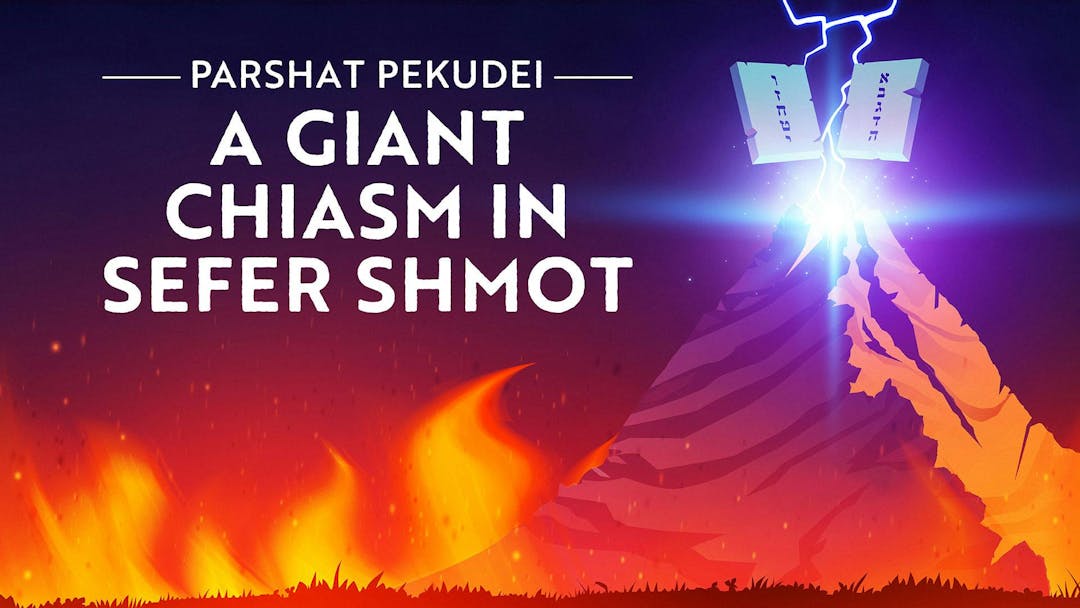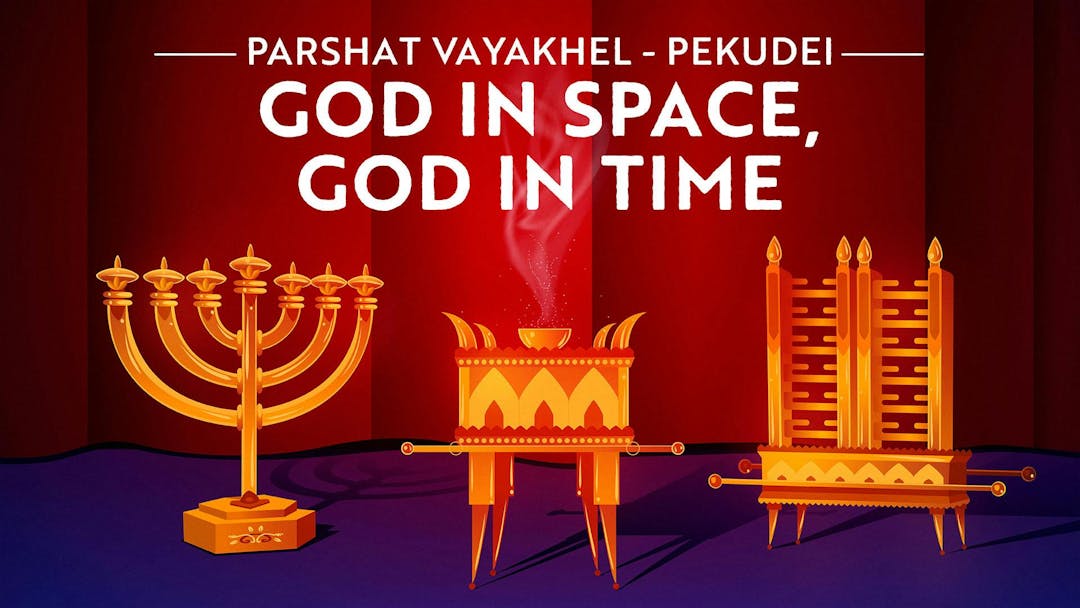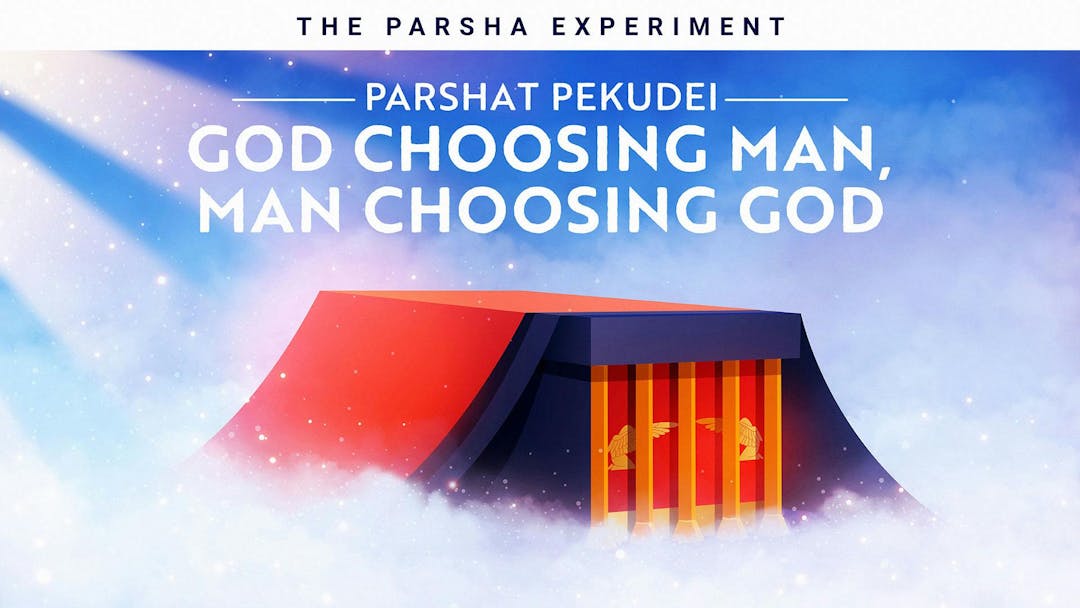Pekudei is the weekly Torah portion read on March 13, 2027
Parshat Pekudei: Dvar Torah, Summary, Meaning & Torah Portion
The Pekudei Torah Portion: Exodus 38:21–Exodus 40:38
The Mishkan is complete! Moses anoints it, and Aaron and his sons are appointed priests. God’s cloud appears over the Mishkan, and God finally dwells within it.
Featured Pekudei Video
The Significance Of The Tabernacle's Colors
Red, purple, white and blue – do they mean anything to you? Watch now to learn about the meaning of the colors in the Mishkan.
Pekudei Torah Portion
Pekudei Dvar Torah & Commentary
Parshat Pekudei Meaning & Summary
Pekudei Torah Portion: Exodus 38:21–Exodus 40:38
We've been reading about the Mishkan (Tabernacle) for four parshas now. The Mishkan narrative begins in Parshat Terumah with God's building instructions, relayed to Moses – and it wends its way through Parshat Tetzaveh, Ki Tisa, Vayakhel, and now, Parshat Pekudei. Having already heard the commands from God about how to build the structure, Parshat Pekudei finishes the story of how the people actually went about fulfilling God's command. We will give you a brief overview of the details described in the parsha, but before we do, we want to invite you to pause – because here we are, at the conclusion of the Book of Exodus– and it's so easy to get lost in these painstakingly, never-ending details of the Mishkan that you miss the bigger point. And not just the bigger point of the Mishkan itself (though we have tons of videos that explore the deeper meaning of the Mishkan – if you're looking for a place to start, then our top pick is Rabbi Fohrman's video here), but the deeper meaning of the Book of Exodus as a whole. The book is filled with one epic story after the next: Israel’s escape from Egypt, the sea splitting, the Ten Commandments, the Golden Calf, and the Tabernacle. We read these stories year after year, but do you ever stop and consider – what's their significance to you? The Author of this book, God, wrote it as an integrated whole, and you are its intended audience. What does He want you to get out of it? Imu Shalev and David Block put together a video in which they wonder about these very questions and offer their own answers; click here to see it.
Now, back to the details of Parshat Pekudei. What actually happens in this parsha? Well, as we said, it's the execution of God's instructions, with a focus on the manufacture of the bigdei kehuna, the special clothes worn by the priests, including the Kohen Gadol (High Priest), which were commanded earlier in Parshat Tetzaveh. Among other things, we learn about:
- the building materials that the children of Israel donated to the construction project (e.g. how much gold, silver, copper, etc.)
- the priestly garments, including the:
- ephod or apron
- Chosen Mishpat ("Breastplate of Judgment")
- me'il (robe)
- tzitz (crown).
By the way, if you're interested in the deeper significance of these articles of priestly clothing, then you will enjoy Rabbi Fohrman and Imu Shalev's Parsha Lab podcast on the topic from Parshat Tetzaveh: "What Do The Laws Of Choshen Mishpat Teach Us About Our Relationship To God?"
Finally, in chapter 39, the penultimate chapter of the Book of Exodus, the construction of the Mishkan is complete. We get a brief recounting of all that was done, and the text emphasizes to us, over and over again, that the children of Israel dutifully discharged the instructions that God had commanded Moses. The component parts of the Mishkan are physically brought before Moses: the walls, pillars, and connective pieces, its tapestries/coverings and curtains, and its interior and exterior furniture, like the altars, the ark, the menorah, and the showbread table. Moses sees it all, sees that the people followed God's word, and he blesses them.
In chapter 40, God relays to Moses a new set of instructions regarding how to actually (finally!) set up the Mishkan and get it ready for business. Moses puts all of the Mishkan's furniture in its proper place: the menorah, the ark, the showbread table, the altars, the washstand, and more, and anoints it all with oil, to sanctify it. He also dresses Aaron and his sons in their priestly garments and pours oil over them, annointing them. He lights the menorah, arranges the showbread, burns incense, and makes a burnt offering and a meal offering. At the conclusion of this whole ritual is the climax: we hear that God's presence finally and indeed comes down from the heavens to inhabit this place that the Israelites have built for Him:
"Then the cloud covered the tent of meeting, and the glory of the LORD filled the tabernacle." (Ex. 40:34)
No one is able to enter the Mishkan at this point — not even Moses, shockingly — because, the text tells us, the glory of the Lord is there. (Chapters later, in the Book of Leviticus, we will read that there is one time, and one time only, when a person will be permitted to enter the innermost sanctum of the Mishkan and to approach the cloud of God's glory. That time is Yom Kippur, the holiest day of the year, and that person is the Kohen Gadol. For more on understanding that approach between man and God, and how it might actually relate to this moment in Parshat Pekudei, see Rabbi Fohrman's video on "The (Surprising) Meaning & Purpose Of Yom Kippur."
Finally, in the closing verses of Parshat Pekudei, we learn about the cloud and fire, seemingly manifestations of God's presence, which would protect and guide the people during their travels. With the Mishkan complete, the children of Israel are ostensibly ready to begin to move towards the Promised Land. But they will not leave the base of Sinai for the next book and a half of the Torah – until Parshat Beha'alotecha. Between now and then stands the Book of Leviticus, wherein the children of Israel learn, among other things, how to offer sacrifices to God who now dwells in holiness in their midst, and how to be holy themselves.
Check out the full text of the Parsha here.
Interested in learning more about the upcoming Parshiot? Check out Aleph Beta’s Parsha pages on Parshat Vayikra, Parshat Tzav & Parshat Shemini!




